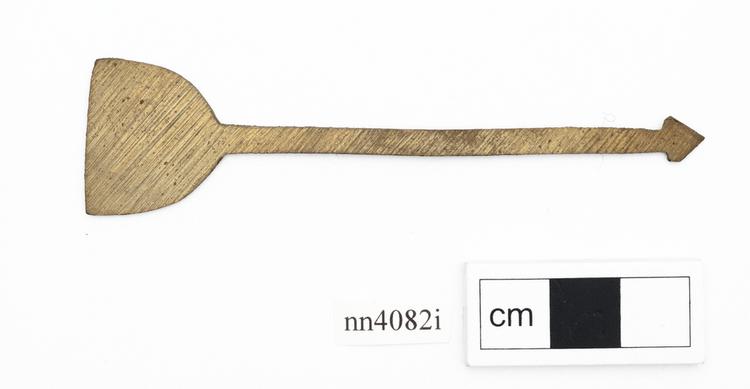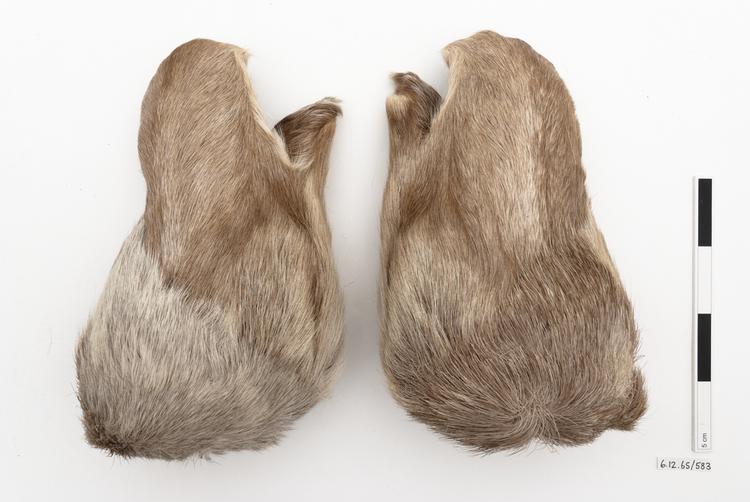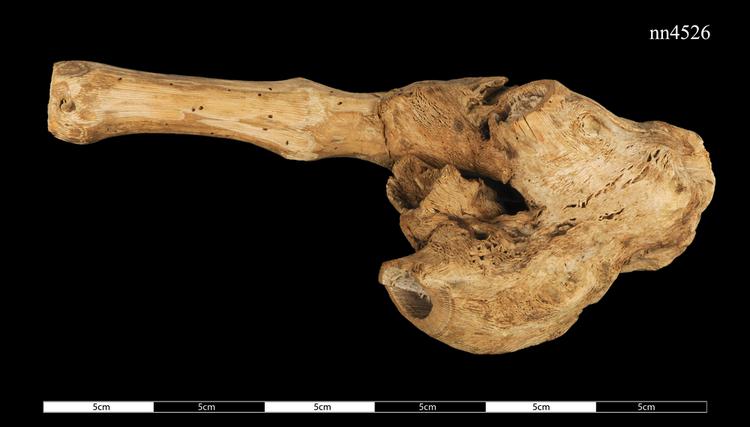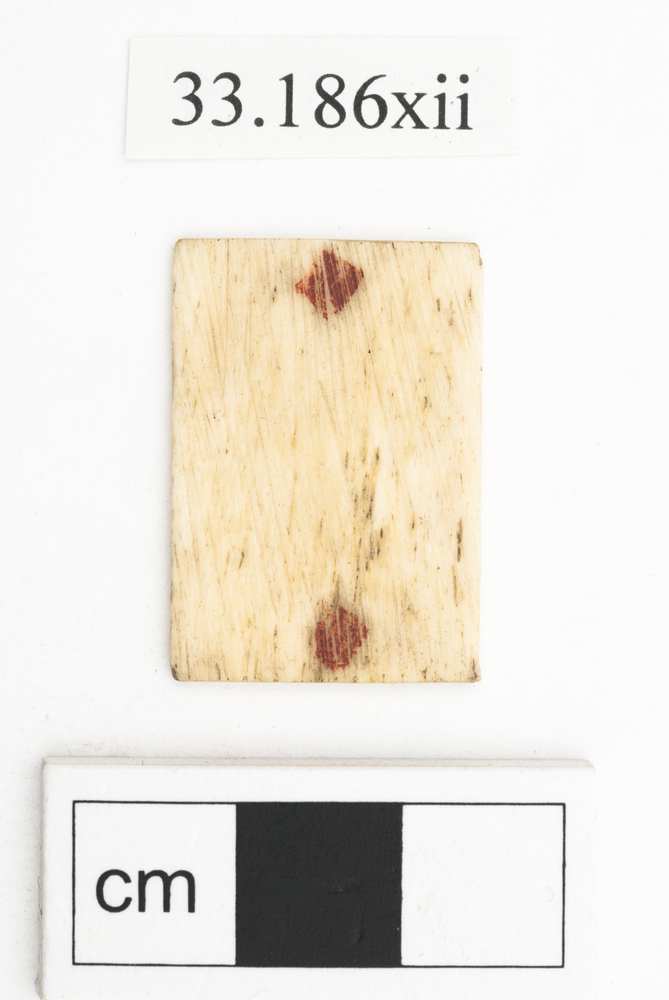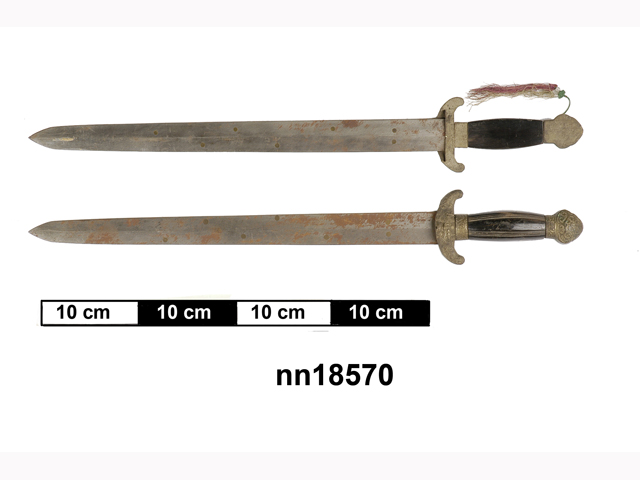
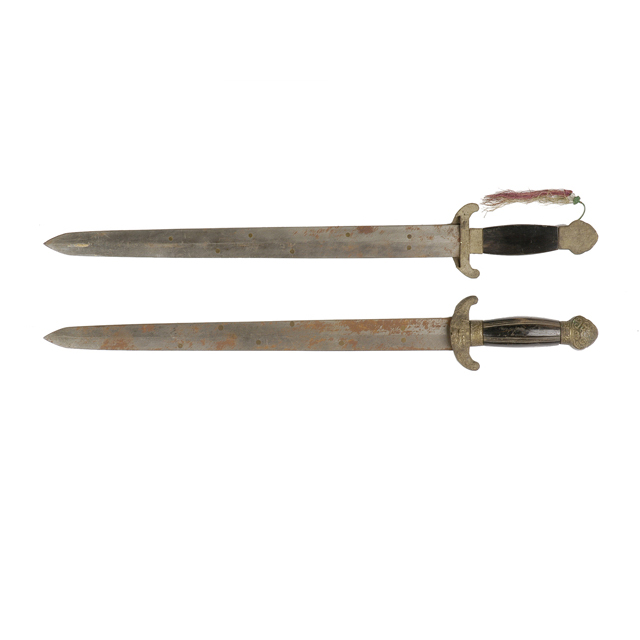
Twin sword known as 'yin yan qi xing jian', translated as 'twin seven stars sword', with black lacquer painted wooden grip surmounted with brass pommel, with a silk tassel attached. The hilt is decorated with moulded lion masks on guards, engraved leafy scroll work on pommel, and incised linear designs on grip. The hilt is flat on one side and convex on the other, so that the sword can easily fit into one scabbard. Blade is of steel, straight, double-edged with central ridge, tapering to a point. Both sides of the blade are inlaid with seven brass dots depicting the seven stars or qi xing.
Swords of this type with seven brass dots inlaid on the blade are also called 'qi xing jian', or 'seven stars sword'. Such swords have been made since the Ming dynasty (1368 - 1644). In China the seven stars, known in the West as the Big Dipper, were referred to as the Northern Ladle. These seven stars were said to represent the Emperor's carriage rotating around the centre of the universe. The constellation was said to govern the Four Directions, and to divide Yin from Yang. It determined the Four Seasons, balanced the Five Elements, regulated the divisions of time and so on. See p.265, Zhou Wei (1957), 'Zhongguo bing qi shi gao', Beijing.



